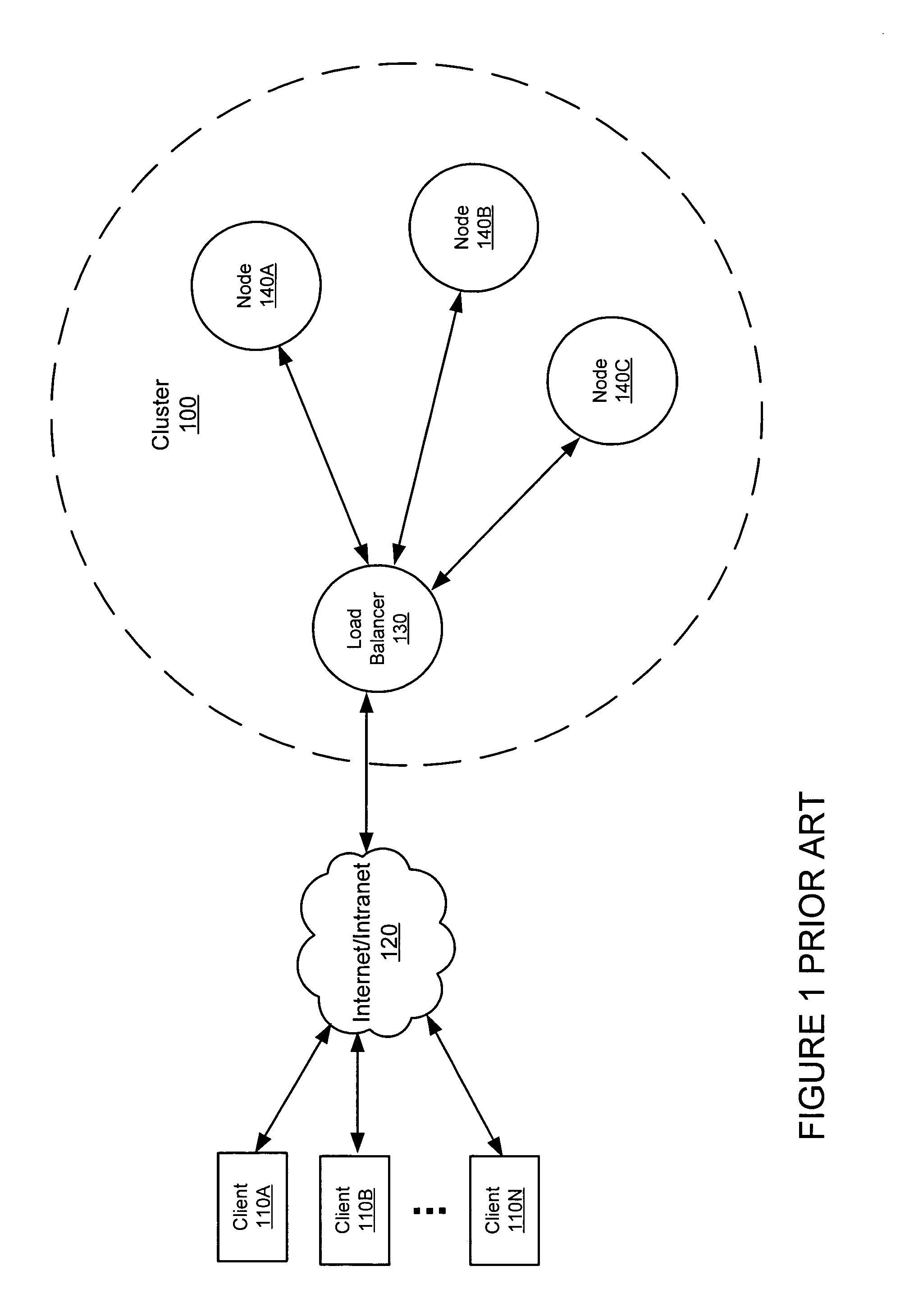Load-balancing framework for a cluster
a cluster and load-balancing technology, applied in the field of computer systems, can solve the problems of limiting the type and/or performance of the included algorithm, no easy way to modify or replace the included algorithm, and no more than the amount of load-balancing
- Summary
- Abstract
- Description
- Claims
- Application Information
AI Technical Summary
Benefits of technology
Problems solved by technology
Method used
Image
Examples
Embodiment Construction
[0034]FIG. 2 illustrates the components of a computer system, which may be suitable for implementing various embodiments of the disclosed invention. Cluster 200 may include two or more processing nodes 240. Each cluster node 240 may execute one or more application components 220. Application component 220 may provide a service or other functionality accessed by client 210. In one embodiment, application component 220 may be an instantiation of an EJB. An augmented stub 250 may implement an interface of the business object so that it looks like the business object 220 to the client 210. But the augmented stub 250 does not include the business logic of the business object 220. Instead it may include a stub with a connection to the business object 220. The augmented stub 250 is referred to as an “augmented” stub in comparison to a normal stub because it includes fail-over functionality, as described below, that operates transparently to the client. Augmented stub 250 appears to the cli...
PUM
 Login to View More
Login to View More Abstract
Description
Claims
Application Information
 Login to View More
Login to View More - R&D
- Intellectual Property
- Life Sciences
- Materials
- Tech Scout
- Unparalleled Data Quality
- Higher Quality Content
- 60% Fewer Hallucinations
Browse by: Latest US Patents, China's latest patents, Technical Efficacy Thesaurus, Application Domain, Technology Topic, Popular Technical Reports.
© 2025 PatSnap. All rights reserved.Legal|Privacy policy|Modern Slavery Act Transparency Statement|Sitemap|About US| Contact US: help@patsnap.com



